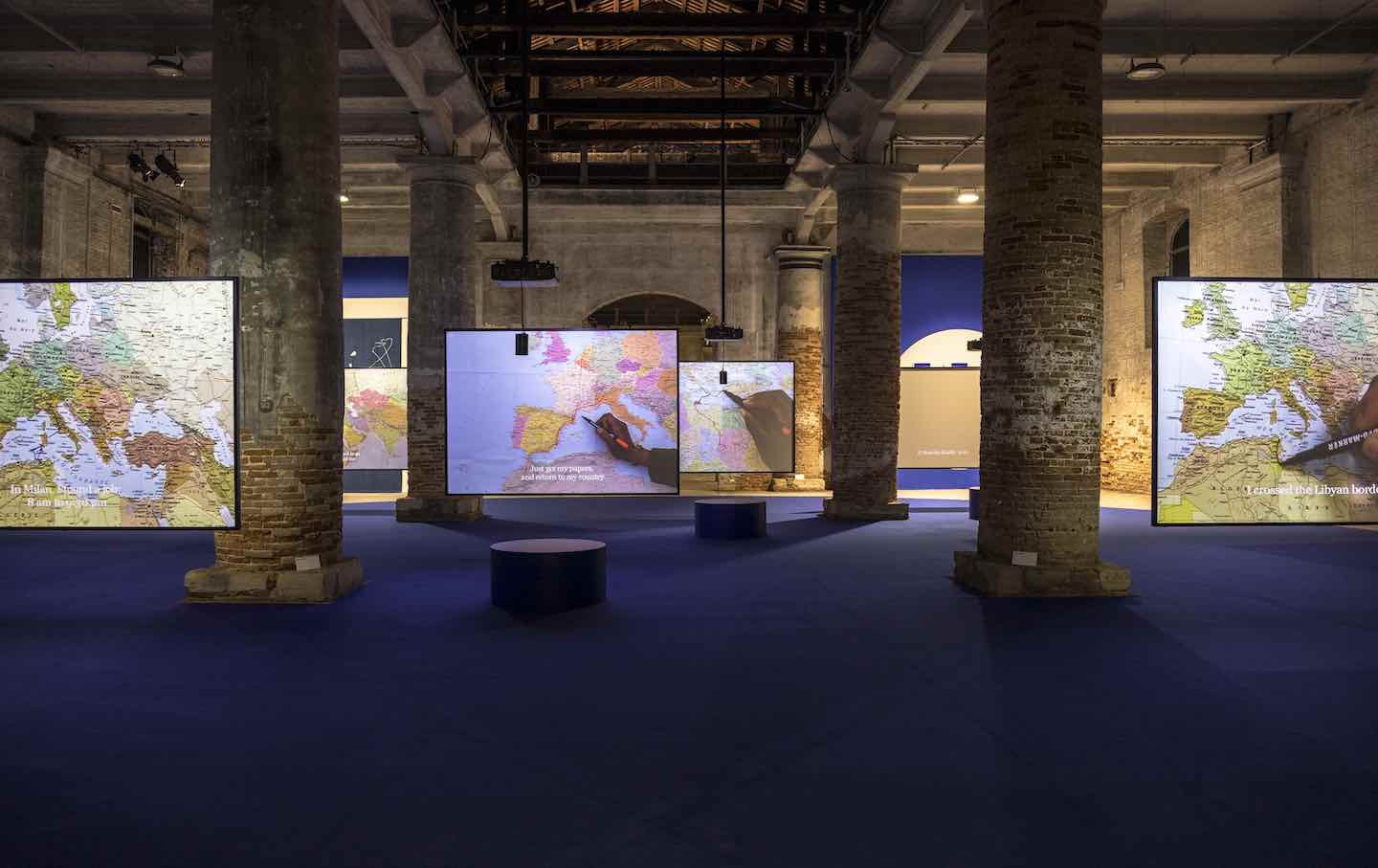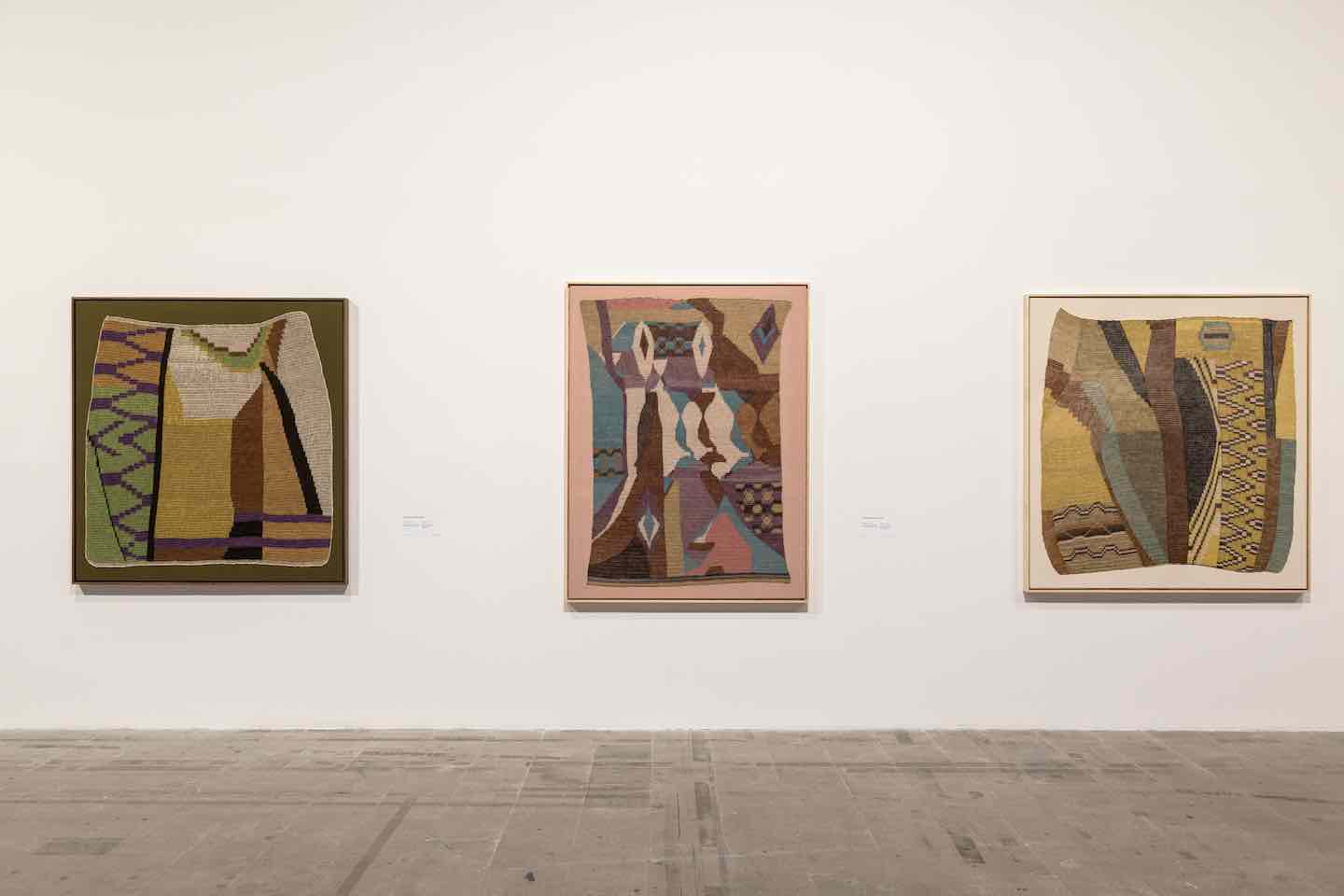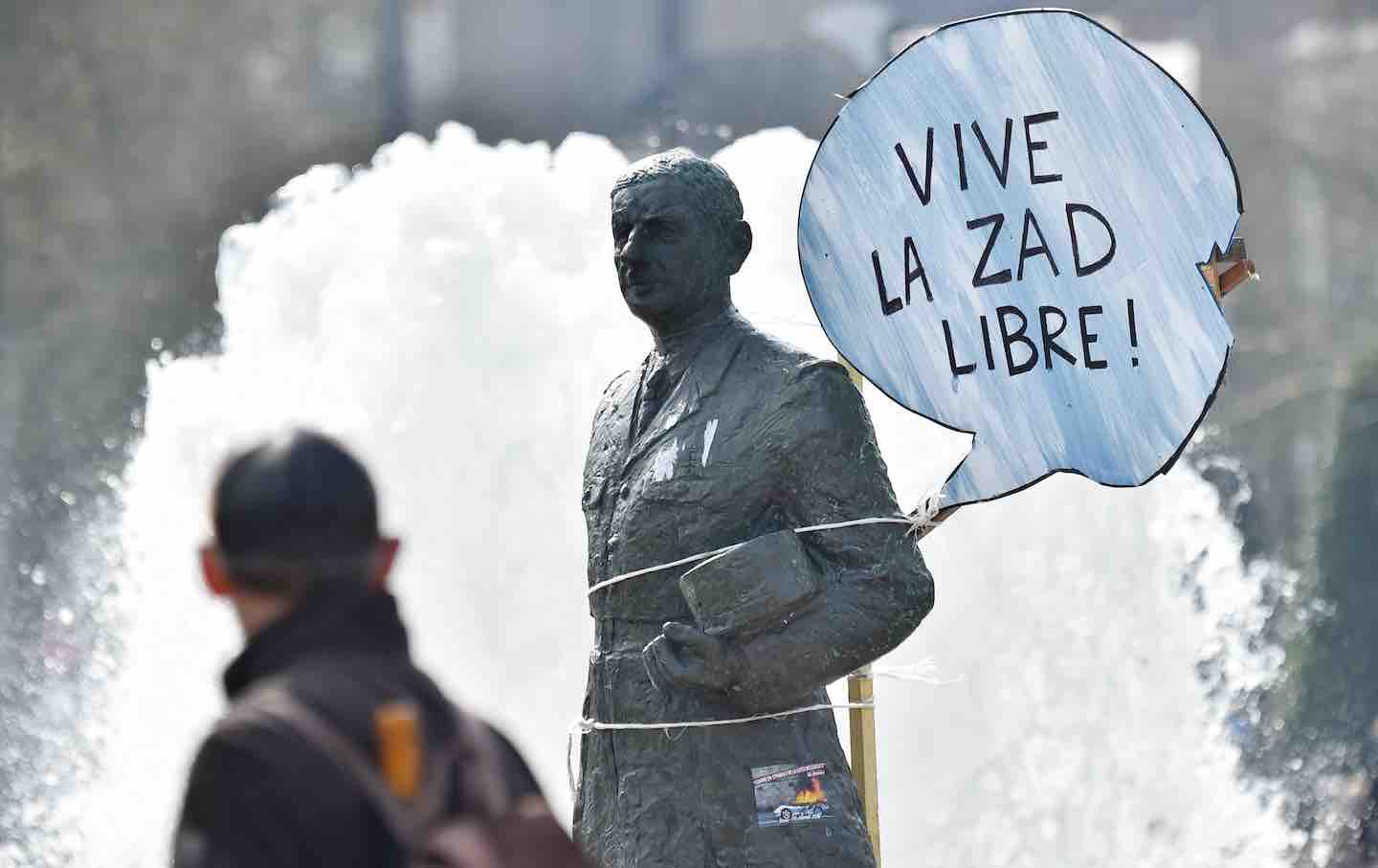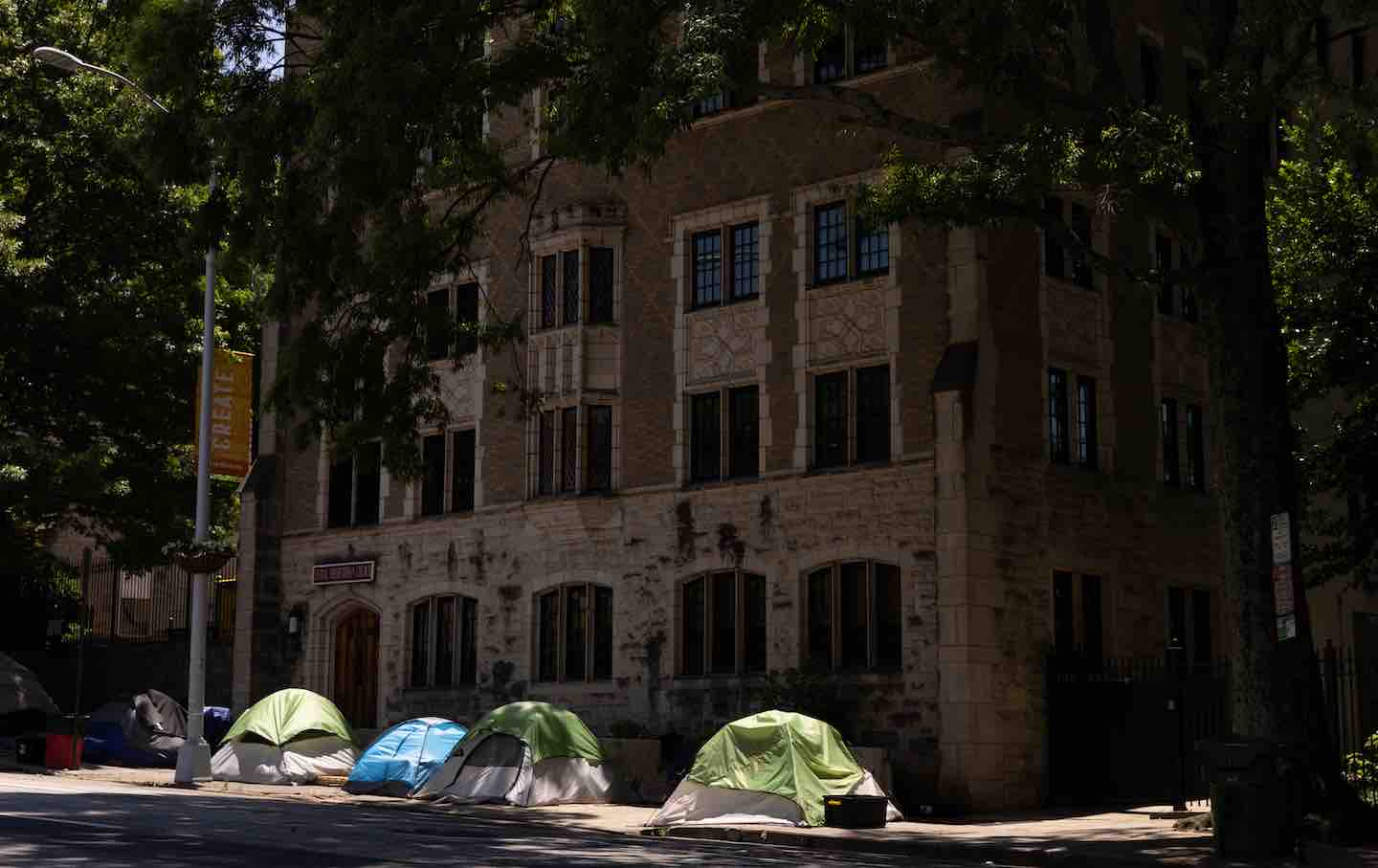The Coming of World Art at the Venice Biennale
At one of the oldest biennials on the planet, a glimpse of a more global idea of art history is on view.

Bouchra Khalili’s The Mapping Journey Project, 2008–11.
(Photo by Marco Zorzanello / Courtesy La Biennale di Venezia)
It was more than 200 years ago when Goethe, thunderstruck by a German translation of the 14th-century Persian poet Hafez, began conceiving of his idea of Weltliteratur, or world literature: “a universal possession of mankind” transcending the boundaries of nations and also, implicitly, of the received history of European literature that traces its descent from Greece through Rome to the various national vernaculars of the modern era. “The epoch of world literature is at hand,” Goethe told his friend Johann Peter Eckermann, “and everyone must strive to hasten its approach.” The progressive value, at the time, of the idea of world literature can be gauged by the fact that this idea found its place even in The Communist Manifesto.
Many Western artists became fascinated by Asian art in the late 19th century, and with that of Africa and Oceania in the early 20th century. Likewise, Western modernism’s influence was felt around the world. But the possibility of a “world art” is of far more recent vintage. Consider one of the first of the great recurrent international art exhibitions, the Venice Biennale, which started in 1895. Actually, it’s misleading to speak of the Biennale, as it exists today, as a single exhibition: It is a vast complex of exhibitions, consisting of a large central show with a different curator for each edition (this year, it’s the Brazilian Adriano Pedrosa); a multitude of national “pavilions” presenting solo or group exhibitions chosen according to each country’s rules; and any number of “parallel events” tied only loosely to the rest of the Biennale and each other. It’s such a sprawl that the only way not to miss more than you see is to skip out on it altogether.
The first of the national pavilions was that of Belgium, inaugurated in 1907. The first non-European country to open a pavilion was the United States, in 1930, quickly followed by Egypt two years later, still the only country on the African continent to have a permanent pavilion in the Giardini del Biennale, the main exhibition grounds. The first Asian nation to present was Japan, in 1956; the first Latin American pavilion was that of Venezuela, also in 1956. But the 30 national pavilions housed in the Giardini still mostly belong to European states; since the 1990s, many nations have rented temporary quarters throughout the city to house their biannual presentations. Until fairly recently, the main curated exhibitions remained dominated by European and North American artists. If there’s been anything like a world art taking shape, in parallel with Goethe’s hope for a world literature, it has spent a long time waiting in the wings.
Sadly, I missed the 2022 Biennale—I still wasn’t quite ready for intercontinental travel after the Covid pandemic. The main exhibition then, “The Milk of Dreams,” organized by the Italian curator Cecilia Alemani, was widely lauded. If I understand the show correctly, part of Alemani’s project for that show was to posit a history of recent art almost entirely devoid of men. In retrospect, the idea is hardly surprising; so prolific has been the presence of women and gender-nonconforming artists in contemporary art that it’s hardly a constraint to limit one’s choice to them.
This year, Pedrosa’s “Foreigners Everywhere” attempts something comparable to Alemani’s conceit, but in a way—given the Biennale’s history—even more radical: a history of recent art almost entirely omitting Europeans and Europe’s diaspora. I’m not sure the result was as pleasurable and instructive as Alemani’s show two years ago seems to have been, but it offered plenty of food for thought to any open-minded visitor. Indeed, there is an ironic reflection here: that this (presumably provisional) pushing of the mute button on Europe, in order to be effective, could only have taken place in Europe. Pedrosa’s show has been received less kindly than was Alemani’s—see, for instance, Jason Farago’s brutal takedown in The New York Times—but I found it fascinating: a commendable, if uncertain, attempt at providing a glimpse of what world art could be.
As my friend and Artforum colleague Pablo Larios has written, curating a biennial “is less an act of revolutionary artistic vision than a balancing act requiring massive logistical and political circumspection.” And while that may be true, Pedrosa has clearly worked hard to get his proposed revolution organized. As usual, the curated show is divided between the Biennale’s main pavilion in the Giardini and the sprawling premises of the Arsenale, a complex of former shipyards not far away, where some of the more recently added national pavilions have also been sited. It’s in the Giardini that Pedrosa has placed the nucleo storico (historic core) of his exhibition: two rooms jam-packed with more than 100 20th-century works, mostly paintings, divided into two categories: abstractions and portraits. The point of the first section is that the signal genre of modernist art—even accepting the conventional account of its multiple origins in pre–World War I Russia, France, and the United States—made itself at home throughout the world, always differently and sometimes drawing on local traditions (e.g., the incorporation of forms reminiscent of Arabic calligraphy by Rafa al-Nasiri and Mohammad Ehsaie). With just one work each by so many artists—many of them very engaging, but most of them small and few of world-historical quality—it’s hard to know how deep any of this went. A more convincing case for world abstraction might have been made by choosing, say, five major works each from 10 of the most outstanding painters from around the world, illuminating the scope of each one’s personal interpretation of what abstract painting can be, thereby doing more to challenge the assumed dominance in this field of Europeans and Americans. Perhaps understandably, Pedrosa was not prepared to give the same kind of space and individual attention to his historical exhibits as to the contemporary art that is, after all, the Biennale’s main concern.
Pedrosa’s choice of portraiture as a dialectical counterpoint to abstraction is puzzling: Why not representation in general, or some other mode of it—landscape, for example, which might have told us so much about how artists see their homelands as well as, so often, their places of emigration or exile? According to the catalog, the section on portraits is meant to suggest the multitude of ways to represent the figure precisely at a time of a “crisis of representation around that very figure.” Point taken. Not only thanks to the stimulus of abstraction, but also through encounters among various not easily commensurable local and regional traditions of representation (among them the European fine art tradition), artists felt the need to experiment, to attempt new syntheses. The problem is that, based on the evidence here, not so many of those attempts jelled. But who really knows? I’d hate to think of anyone trying to extrapolate the gargantuan oeuvre of Diego Rivera from the rather incoherent little 1915 Cubist portrait on view here. In art as in life, awkwardness can be endearing, but the sheer quantity of half-baked solutions here makes for a glum presentation, despite the presence of strong works by artists both well-known (Tarsila do Amaral, Frida Kahlo, Wifredo Lam) and more obscure (the Dominican Jaime Colson, the Iraqi Fai Hassan, the Singaporean Lai Foong Moi).
Those sections on artists from what I don’t like calling the Global South—the term, used numerous times in the catalog, can homogenize so many vital differences—are echoed and inverted in a historical section of the presentation at the Arsenale. Pedrosa turns his theme inside out with a section called “Italians Everywhere,” featuring artists who were part of Italy’s vast 20th-century emigration, particularly to South America, but also to Africa, Asia, and North America. This is by far the most “European” part of Pedrosa’s show, but it is enlivened and given point by the artists’ varied understandings of how European their work should remain, and in what ways, and to what extent, it should attempt to engage formally or thematically with their adopted cultures. Again, with just a single work by each artist on view, it is impossible to reconstruct their effort to engage with the unfamiliar realities they’d entered in any concrete way, but that such an engagement had happened becomes implicit.
Brilliantly, “Italians Everywhere” has been installed using the beautifully inventive display system created by the Italian Brazilian architect Lina Bo Bardi in 1968 for the São Paulo Art Museum: plate-glass “easels” supported by big blocks of concrete, which make the paintings appear to float in the room. The glass also reveals the backs of the paintings, and on the glass verso are the objects’ labels—ostensibly allowing viewers to approach the works in an unmediated way, informing themselves about what they’ve seen afterward. Of course, this reveals Bo Bardi’s bent toward a Western modernist formalism at odds with Pedrosa’s own essentially anthropological concern in assembling his global village—elsewhere, the labels avidly highlight the artists’ biographies, ethnicity, sexual orientations, and so on. Notwithstanding, viewers are free to see things as formally or as contextually as they please, but it’s good to have the tension between the two perspectives highlighted.
One doesn’t come to a Biennale in expectation of a history lesson, but Pedrosa’s brisk traversal of an alternative modernism amounts to a bracing call for a wholesale reexamination of the stories we depend on in order to understand contemporary art. He doesn’t propose a new narrative, but he does present enough material to show that the old one will no longer do.
As for the contemporary offerings at “Foreigners Everywhere,” it’s often hard to see how they connect to Pedrosa’s nucleo storico. Most of the recent art on view, diverse as it may seem at first, falls into one of three broad categories. Those most closely connected to the historical pieces are works, mostly painting and sculpture, that in one way or another continue the formal investigations of the modernists—but these (or so it’s my impression) are the least numerous and least striking of the three groups. The second category is constituted by what in the past would have been understood (and generally dismissed) as folk or naïve art: figurative, often narrative painting by artists who seem to have taught themselves, and who might have been working for a small community or even just for themselves, without much consciousness of the potential existence of what I’ve called world art. Paradoxically, these works have great particularity in their subject matter but tend to share many stylistic traits despite their far-flung origins. Untutored ways of picturing turn out to be similar everywhere; it is the developed and refined traditions that cultivate difference.
But what dominates the show—and most of the national pavilions as well, which I’ll get to shortly—is what I call international installation art: room-filling assemblages of diverse materials, objects, images, and, increasingly, sounds and video imagery. Such works take a given three-dimensional space as a support or container, almost as a painter takes a blank canvas as a support onto which colors can be applied at will, or even objects montaged. These immersive works tend to look either very “poor” or very expensive. The idiom is familiar and without markers of any local artistic lineage, even if the overt content—basically, the choice of materials with which to fill most of the room—intends to speak of distinct and often geographically particular experiences. Is this world art incarnate? I don’t think so, because it lacks an implicit filiation with the other two genres of art on view, the quasi-modernist and quasi-folk genres. It can incorporate them—using such works as raw material the way it uses anything else, indifferently—but it doesn’t make aesthetic common cause with them.
Popular
“swipe left below to view more authors”Swipe →It’s impossible, in the hours spent walking through an exhibition of this scale, not to note such generic similarities among the works on view, but that’s not why I’m here. The real goal is to see at least a few things that somehow transcend categories, that are striking and memorable to the extent that they seem unclassifiable, perhaps even despite an initial appearance of familiarity. I could have wished for more of those moments in “Foreigners Everywhere,” but they were not entirely lacking. Unforgettable for me were several works by Claudia Alarcón, an artist from the indigenous Wichí people of northern Argentina, born in 1989. Most of her works here are credited as a collaboration with Silät, described as “an organisation of one hundred women weavers of different generations from the Alto la Sierra and La Puntana Wichí communities.” Framed and behind glass, Alarcón’s works could appear to be simply modernist abstract paintings made by other means: woven rather than painted, an idea anticipated in the nucleo storico by woven abstractions by Monika Correa (from India) and Olga de Amaral (from Colombia). And why not? Their complex beauty, their richness of form and color, would stand comparison with anything by, say, Brice Marden or Amy Sillman. But one senses a different impulse in operation when looking at Alarcón’s work: a distinct communicative urgency, and a grafting of diagrammatic and pictorial ways of evoking complicated meshes of times and places. As a result, even without being able to verify it, one is not surprised to read, on the exhibition’s wall label, that “these artworks stem from stories dreamt and told by elders in the community which warn of the relationships humans forge and break with all living things.” But how do those dream stories transmit themselves in an international exhibition attended by people outside their community of origin? We don’t hear the voice of the elders. What is lost and what is gained in their silence?

To make a first acquaintance with such art is one of the things that makes a visit to the Biennale worthwhile. Another, sometimes, is to have one’s previous impressions confirmed. I first saw The Mapping Journey Project (2008–11), an eight-screen video installation by the Moroccan-born, Vienna-based artist Bouchra Khalili, in 2014 at the New Museum in New York, where it struck me, as I wrote at the time, as a brilliant and poignant use of a “minimalist aesthetic…(immobile camera, repetitive structure, reduction of the human presence to the hand and the off-screen voice)” to convey the absurd and thankless experience of migrants expending incalculable time and energy on moving around Europe in search of work. Each screen shows nothing more than a map on which we see someone’s hand drawing the vectors of a person’s peregrinations while we hear their narration of it in voice-over. In concert the eight videos tell us all we need to know about the conflict between the ineffectuality of all efforts to stem the fundamental human impulse to move in search of the means of life, and the sanguine resourcefulness of those who find themselves, whether by choice or necessity, on the move. I’m even more convinced, seeing it again after a decade, of what an extraordinary work it is.
Seeing Khalili’s installation in the same show as Alarcón’s weavings means seeing each one differently than one would by seeing them separately. It raised a fundamental question about art’s function in a world perspective. Through its charting of travels whose unforeseeable ends are at the mercy of fortune and opportunity or their absence, The Mapping Journey Project becomes a paradigmatic representation of lives that are uprooted, diasporic, errant—and the very form of the video installation, a genre of recent vintage dependent on a technology whose very production is dispersed across a global supply chain, reflects this itinerancy. Alarcón’s works are immediately recognizable as a form of abstraction that, whether connected or not, makes sense with reference to developments in European and American art of the last century (but also, perhaps, to other art forms eccentric to those developments, such as contemporary Australian Aboriginal painting). Yet they also call on us to see them not only as products of the prototypical modern artist pursuing an individual intuition, but also as the singularly rooted expression of an age-old community strengthened by resistance to settler encroachment. Again, the very material out of which Alarcón’s works are made—the fibers of the chaguar plant, native to her people’s terrain—and her techniques of weaving reflect this insistence on cultural continuity and an ineradicable connection to place. How to arrive at a perspective that accords equal understanding to both—how to feel the value, beauty, and vulnerability of each without blinding oneself to the value, beauty, and vulnerability of the other—is a question perhaps beyond the capacity of any art exhibition to communicate.
If the curated portion of the Biennale suggests the imminence—just beyond the horizon, perhaps—of a synthesis of once-unrelated forms, histories, and activities under a new sense of world art (if only under the watchful eye of that indispensable master of ceremonies known as the curator), the persistence of the national pavilions as anchors of the Biennale reminds us that the ungainly yet seemingly still-indispensable idea of the nation-state, in all its prejudice and restrictiveness, persists.
These days, in their presentations in Venice, many of the contributors are trying desperately to overcome their own limitations—with varying degrees of success. In the Swiss pavilion, for instance, a Swiss-Brazilian artist with the extraordinary moniker Guerreiro do Divino Amor has come up with what I’d vote the worst national presentation of the year, a heavy-handed, satirical send-up of a purported Swiss sense of superiority under the title of, yes, “Super Superior Civilizations.” Far better was the Austrian pavilion, where Anna Jermolaewa wittily charts her experience as an immigrant in Vienna after she fled what was then still the Soviet Union in 1989 and the surreality of much of what she experienced before her emigration—for instance, in the new video piece she made for her presentation in Venice, Rehearsal for Swan Lake (2024), which takes off from her recollection that in Soviet times, when the news was too troubling and ambiguous to be reported, the television stations would just repeatedly broadcast performances of Tchaikovsky’s ballets. The Netherlands pavilion presents an exhibition of sculptures by members of the Cercle d’Art des Travailleurs de Plantation Congolaise (Congolese Plantation Workers Art League, or CATPC), also co-credited to the Dutch artist Renzo Martens (who helped found the collective, but whose precise role in the exhibition remains strangely unclear), rebuking European colonialism and the multinational corporations that continue to exploit workers in Africa.
Even more than the curated show, the pavilions this year have gone all in on installation art, but lovers of painting won’t want to miss the first-ever Ethiopian Pavilion, in an off-grounds palazzo, where painter Tesfaye Urgessa is showing some ambitious compositions that would not look out of place next to works by major Western artists such as Nicole Eisenman or Dana Schutz. But my vote for outstanding pavilion—and maybe for the finest work on view in the whole Biennale—goes to Egypt, where Wael Shawky’s mesmerizing video Drama 1882 documents a theatrical presentation, really a kind of cross between a pageant and an opera, that represents with Brechtian clarity an anti-colonial rebellion in Alexandria in 1882. “There was a revolt led by the Egyptian Colonel Ahmed Urabi against the Egyptian monarch,” Shawky has explained, “calling him a traitor because he fell prey to the British and French. The interesting thing about this discourse is the idea of the foreigners—what does it mean to be ‘foreigners’? Who were they? They were the occupiers—it was not the idea of immigrants that we have today.” Crucial differences may be erased in our eagerness to share a deracinated, depoliticized foreignness.
Implicitly, Shawky seems to be challenging his own country, his own government—which has made the presentation in Venice possible—and also Pedrosa’s understanding of the foreign as an existential condition we might presumably all share: an ultimate sense of not being at home in the world that is part and parcel of modern life, even (I suspect) for Indigenous communities that grow closer together in response to nation-states that recognize them only with difficulty. But that very real sense of foreignness is something different from the political confrontation with powerful others that Shawky evokes, and that is glaringly on view elsewhere in the Giardini: The Israeli pavilion is locked, with a sign explaining that the artist, Ruth Patir, will allow it to open only “when a ceasefire and hostage release agreement is reached.” When I passed by, the pavilion was being guarded by three armed Italian soldiers in camo gear. Through the plate-glass façade, I could see in the back of the space a video being projected to no audience, with what looked like animated footage of ancient statuary—dead history coming uncannily alive.
The world literature augured by Goethe has arrived only at the price of a certain homogenization—just think that it now seems to be mainly in the hands of a few international publishing corporations, not those of poets and scholars (barring a handful of unknowns in Sweden). Perhaps the conflicts to which Shawky points still stand in the way of the emergence of a true world art. And yet anyone in the world, I imagine, should be captivated by the formal magic he’s expended on the representation of a revolt that may never find its resolution.








